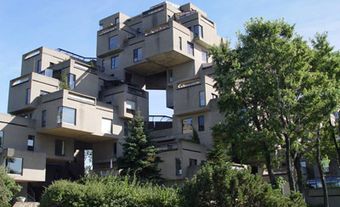Roy LeMoyne
Roy LeMoyne, architect, teacher, author, air force officer (b at Lafleche, Sask 4 July 1920; d at Ste-Anne-de-Bellevue, Qué 4 June 2002). LeMoyne served in the RCAF from 1942 to 1945 as a Flying Officer with 113 (Bomber-Reconnaissance) Squadron. In 1951, he graduated from the McGill School of Architecture. He obtained a Québec government bursary to pursue an internship at the architectural workshop of Eugene Beaudoin in Paris, France, in 1951-52. He began professional architectural practice in Montréal in 1952 with the firm Rother, Bland, Trudeau (later LeMoyne, Lapointe, Magne) and became a partner in 1960, retiring in 1995.
In 1970, John BLAND, the director of the McGill School of Architecture, appointed LeMoyne auxiliary professor at the school, where he lectured on professional practice and specifications. From 1970 to 1972, LeMoyne was president of the committee of building conservation and maintenance for the MUSÉE DES BEAUX-ARTS DE MONTRÉAL . In 1984, he became the director of research at the Royal Architectural Institute of Canada (RAIC). A fellow at the RAIC, LeMoyne was a member of several other professional associations including the Ordre des architectes du Québec (OAQ); the Association des architectes en pratiques privée du Québec (AAPPQ); the Ontario Association of Architects; and the Canadian Institute of Planners.
Throughout his career, LeMoyne led a broad variety of architectural and urban planning projects in Canada, including the Northern Electric Research Laboratories (1959-1970, Mention, Massey Medal, 1964; Prize of Merit, Ontario Masons' Relations Council, 1965) in Ottawa, the first laboratory centre in Canada devoted to telephone research; the Sanitary Refuse Collectors Reduction Plant, Ville d'Anjou, Québec (1963, Massey Medal 1964), a structure where external forms represent internal operations; and the University of Windsor library extension (1972, Design Canada Prize of Excellence 1973), where the interplay of design and materials is seen in the largely exposed concrete interior and fully covered brick exterior.
LeMoyne believed that architects had to be fully informed about the characteristics of the materials with which they worked. For LeMoyne, the role of the manufacturing industry was to develop products and to provide and continue to improve communications systems that truly represented these products. Reliable and comprehensive research and listing information, therefore, enabled design professionals to make informed and confident supply choices. For LeMoyne, the design process comprised an information/inspiration mix where information from manufacturers coupled with inspiration from design professionals.

 Share on Facebook
Share on Facebook Share on X
Share on X Share by Email
Share by Email Share on Google Classroom
Share on Google Classroom

